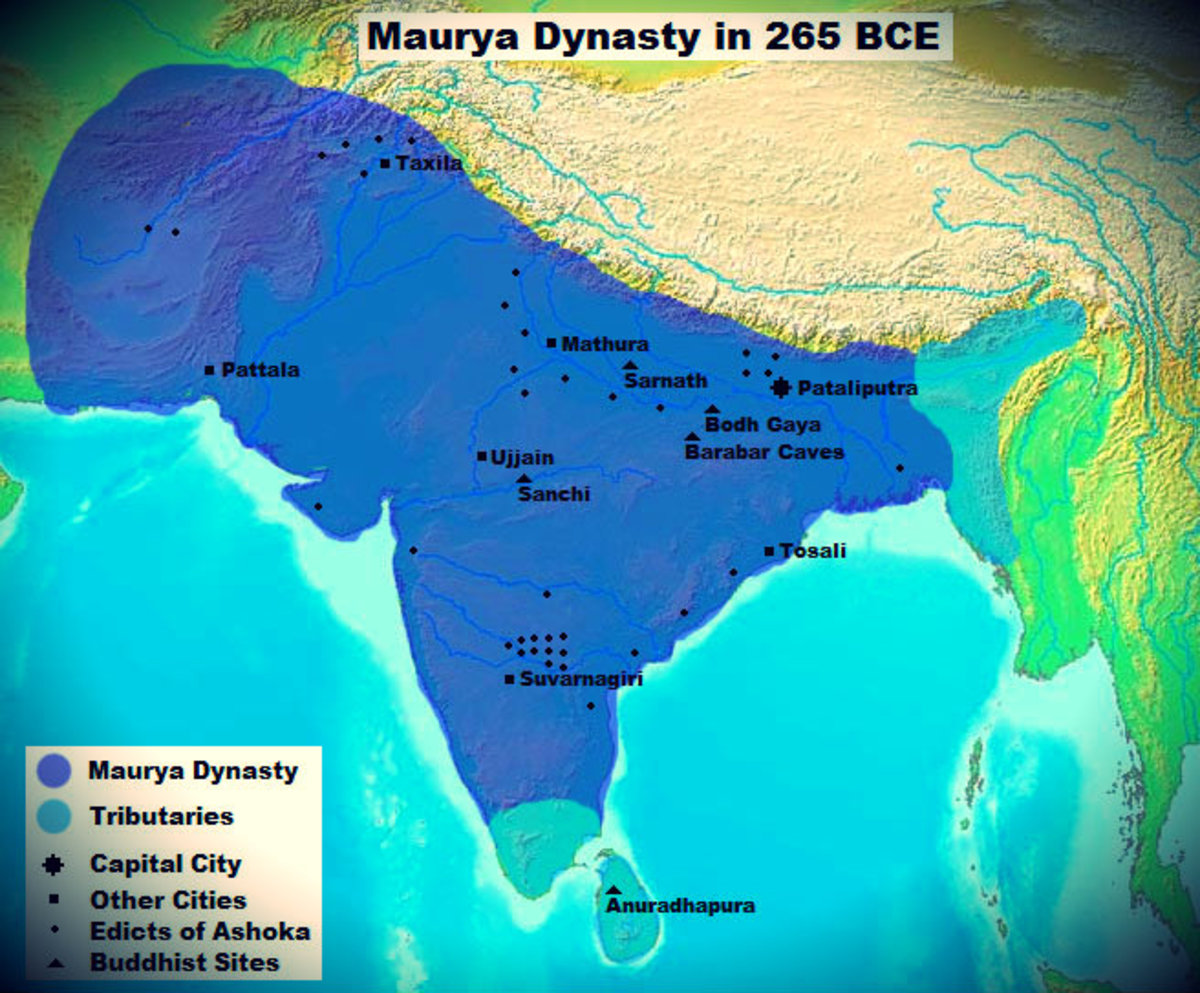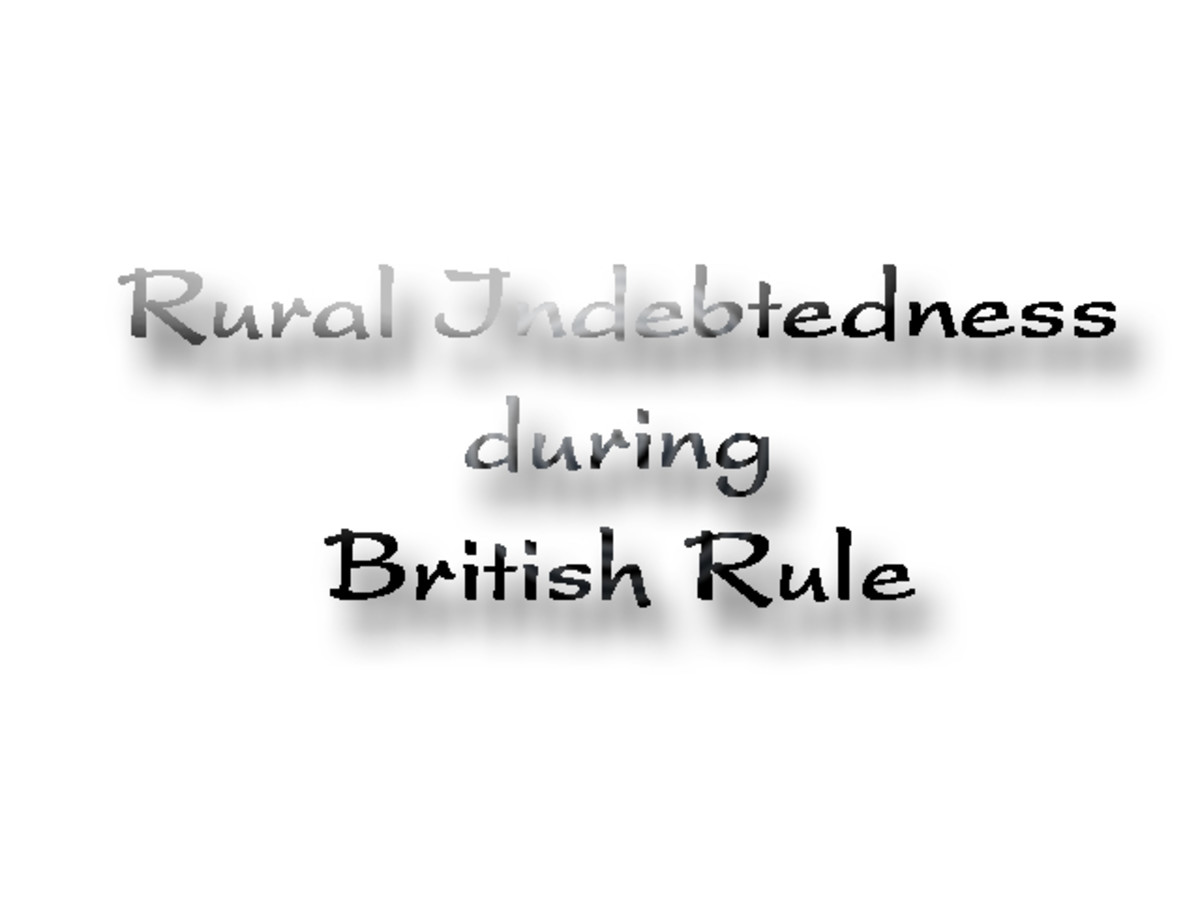- HubPages»
- Education and Science»
- History & Archaeology»
- History of Asia
Revolt of 1857

In 1857 a violent revolt broke out against the East Indian Company Government in Northern and Central India. Sepoy's or the soldiers of the East India Company, rulers of the native states, soldiers of disbanded armies of native states, landlords, peasants, conservative sections etc. have revolted against the English.
Causes for the Revolt of 1857
- Discontentment among the sepoys had been brewing for a long time; for, they were neither paid well nor treated well. Their promotional avenues were very limited; for, they could only go up to the rank of Subehdar, Their demands for extra allowances for fighting in remote areas were not met. On this issue some regiments had already mutinied on four occasions during 13 years period prior-to 1857. They suffered inhuman treatment under the English officers. They were treated like animals. Annexation of Oudh hurt many of them; for, their kith and kin suffered under the English because of exorbitant land revenues, disbandment of troops, etc. after the take over of Oudh.
- Certain acts of the English had also hurt the sentiment of the sepoys. Under Lord Canning's General Services Enlistment Act recruits to the Bengal Army should be prepared to serve overseas, if need be. This infuriated the caste Hindus of the so called Bengal Army who were mostly Brahmins and Rajputs from Avadh, and Bihar; for, they felt they would lose their caste by going overseas. Finally, came the last straw on the camels back; Cartridges greased with cow's fat and pig's fat were forced on the sepoys against their wishes.
- Certain circumstances also emboldened the sepoys, Disparity in numbers between Europeans and sepoys in the Indian army was considerable; at the time of Dalhousie's departure Europeans numbered only 45,322 whereas Indians numbered 2,33,000. Distribution of troops was defective. Places of strategic importance like Delhi and Allahabad were manned by sepoys. Between Allahabad and Calcutta only One British regiment was stationed at Dinapore near Patna. The belief of invincibility of the English was shattered with their defeat in the First Afghan war (1838-42).
- The rulers of the native states, too, were discontented. Some lost their states because of the Dalhousie's policy of ruthless annexation. Dalhousie used doctrine of lapse and other execuses in his expansionism. Jhansi , Nagpur and Oudh were annexed. The annexations turned Rani Lakshmi Bai of Jhansi, Nawab Wajid AN Shah of Oudh, enemies of the English. Nanasaheb became the sworn enemy of the English as the English refused to extend the pension of ex-peshwa Baji Rao-ll to him on the ground of being the adopted son. The proposal for the removal of the descendants of the Mughals from the Red Fort to Kutub made by Dalhousie in 1849 and the announcement of Canning in 1856 that after Bahadur Shah the Mughuls would loose the title of King and only be called princes, annoyed Bahadur Shah-ll. Some of the rulers who were not directly affected by the English were also unhappy for they felt that they might meet the same fate as that of the other rulers.
- Zamindars too were dissatisfied with the English. Zamindars of Oudh suffered a lot after its annexation because of confiscation of estates of most of Zamindars. Dalhousie took over several Jagirs in Bombay,. Resumption of rent-free estates in Bengal caused discontent among landlords.
- Disbanded soldiers of the annexed Indian states were also in the forefront of the revolt as they lost their jobs. In Oudh alone 60,000 families lost their livelihood.
- Those who lost well paid jobs in the bureaucracy of the Indian states after annexation were also unhappy. Artists dependent on the patronage of the annexed states were equally unhappy.
- Conservative sections of the Hindus and the Muslims were also against the British as they felt that various acts of the English were aimed at attacking their religions. Abolition of 'sati' and female infanticide, Hindu Widow Remarriage Act, 1856, extension of Western education, even introduction of railways and telegraphs, protection of civil rights of converts from Hinduism by Religious Disabilities Act of 1856, and aggressive activities of missionaries, were looked on by these conservatives as attacks on Hindu society. Pandits and Moulavies feared that the spread of Western influence would jeopardise their livelihood.
Failure of the Revolt of 1857
- Those who revolted had no unified and well coordinated command structure. The Revolt broke out at different places. It had neither unified command nor unity of purpose. Different leaders led revolts at different places; Rani Lakshmi Bai at Jhansi and Gwalior, Nana Sahib at Kanpur, etc. The sepoys mutinied at different places: Meerut, Delhi, etc. Their efforts were not well directed and co-ordinated. They lacked unity of purpose as different leaders nurtured different ambitions.
- The revolt was not well planned. The revolt broke out on 10th May 1857 much earlier than the appointed day 31st May, 1857. The revolt was not wide spread. Even in north India, West Punjab, Sindh, and Rajputana did not witness any revolt.
- A great part of the English army (Sikh, Rajput, Ghoorka battalions) remained loyal to the British.
- The English had superior resources in terms of ammunition and food supplies. They also made use of wide spread telegraphic system.
- The English Generals like Lawrence, Havelock, Nicolson, Edwards, etc. were superior in military training. Though the leaders of the revolt were brave, lacked the superior military training like their counterparts.
Consequences of the Revolt of 1857
- The East India Company Rule in India came to an end. The administration was taken over by the British Grown. Board of control and Board of Directors were abolished and in their place the Office of the Secretary of the State by the Act of Better Government of India 1858 were created.
- Governor General also came to be known as Viceroy of the British Crown.
- Indian army was thoroughly reorganized. The European forces were increased and artillary was entrusted to them.
- Policy of ruthless annexation was given up. Indian princes were assured that no Indian state would be annexed in future and the adopted sons were also allowed to succeed.
- Full religious freedom was granted to the people. The English stopped interfering in the religious and social life of the people for a long time.
- People were assured that no one would be barred from getting higher posts., Of course the promise was. not fulfilled.
- After the revolt, the British followed the policy of divide and rule. From 1857 to 1885, they preferred the Hindus in giving jobs, etc. and kept Muslims at an arms length because of their conclusion that Muslim conspiracy was responsible for the revolt.




